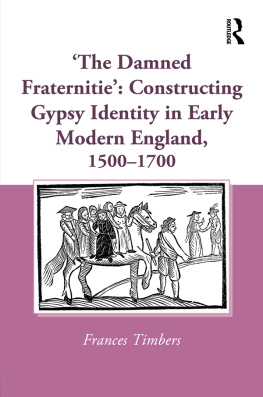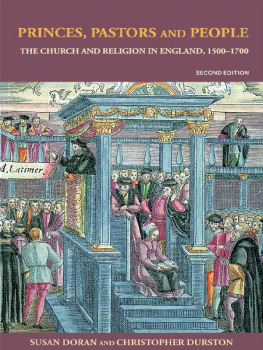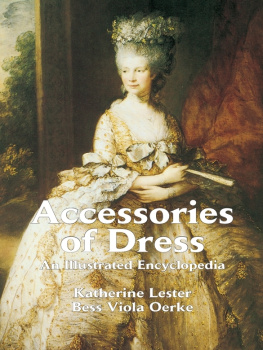Frances Timbers - The Damned Fraternitie: Constructing Gypsy Identity in Early Modern England, 1500–1700
Here you can read online Frances Timbers - The Damned Fraternitie: Constructing Gypsy Identity in Early Modern England, 1500–1700 full text of the book (entire story) in english for free. Download pdf and epub, get meaning, cover and reviews about this ebook. year: 2016, publisher: Routledge, genre: Art. Description of the work, (preface) as well as reviews are available. Best literature library LitArk.com created for fans of good reading and offers a wide selection of genres:
Romance novel
Science fiction
Adventure
Detective
Science
History
Home and family
Prose
Art
Politics
Computer
Non-fiction
Religion
Business
Children
Humor
Choose a favorite category and find really read worthwhile books. Enjoy immersion in the world of imagination, feel the emotions of the characters or learn something new for yourself, make an fascinating discovery.
- Book:The Damned Fraternitie: Constructing Gypsy Identity in Early Modern England, 1500–1700
- Author:
- Publisher:Routledge
- Genre:
- Year:2016
- Rating:4 / 5
- Favourites:Add to favourites
- Your mark:
- 80
- 1
- 2
- 3
- 4
- 5
The Damned Fraternitie: Constructing Gypsy Identity in Early Modern England, 1500–1700: summary, description and annotation
We offer to read an annotation, description, summary or preface (depends on what the author of the book "The Damned Fraternitie: Constructing Gypsy Identity in Early Modern England, 1500–1700" wrote himself). If you haven't found the necessary information about the book — write in the comments, we will try to find it.
The Damned Fraternitie: Constructing Gypsy Identity in Early Modern England, 1500–1700 — read online for free the complete book (whole text) full work
Below is the text of the book, divided by pages. System saving the place of the last page read, allows you to conveniently read the book "The Damned Fraternitie: Constructing Gypsy Identity in Early Modern England, 1500–1700" online for free, without having to search again every time where you left off. Put a bookmark, and you can go to the page where you finished reading at any time.
Font size:
Interval:
Bookmark:

| APC | Acts of the Privy Council of England |
| CAR | Calendar of Assize Records |
| CSPD | Calendar of State Papers, Domestic |
| DNB | Dictionary of National Biography |
| ERO | Essex Record Office, Chelmsford, Essex |
| GLS | Gypsy Lore Society Collections, University of Liverpool |
| JGLS | Journal of the Gypsy Lore Society |
| HMC | Historical Manuscripts Commission |
| HMSO | Her Majestys Stationery Office |
| LMA | London Metropolitan Archives |
| LPFD | Letters and Papers, Foreign and Domestic, of the Reign of Henry VIII |
| OED | Oxford English Dictionary (www.oed.com) |
| PRO | Public Record Office |
| RPSS | Register of the Privy Seal of Scotland |
| SMGC | Scott Macfie Gypsy Collections |
| SP | State Papers |
| SR | Statutes of the Realm |
| STAC | Star Chamber Records |
| TNA | The National Archive, Kew, Richmond, Surrey |
| WYRO | West Yorkshire Record Office, Leeds, West Yorkshire |
Font size:
Interval:
Bookmark:
Similar books «The Damned Fraternitie: Constructing Gypsy Identity in Early Modern England, 1500–1700»
Look at similar books to The Damned Fraternitie: Constructing Gypsy Identity in Early Modern England, 1500–1700. We have selected literature similar in name and meaning in the hope of providing readers with more options to find new, interesting, not yet read works.
Discussion, reviews of the book The Damned Fraternitie: Constructing Gypsy Identity in Early Modern England, 1500–1700 and just readers' own opinions. Leave your comments, write what you think about the work, its meaning or the main characters. Specify what exactly you liked and what you didn't like, and why you think so.






